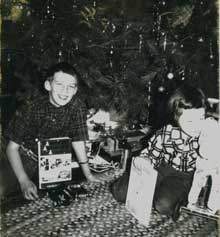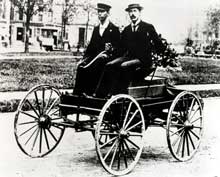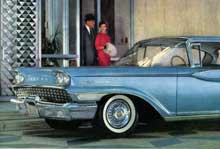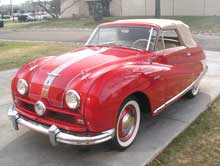Boxing Day
Today is Boxing Day in the United Kingdom and many Commonwealth countries. Nothing to do with prize fights, Boxing Day was the time that the gentry gave gifts to their employees and those of the lower classes. Its name derives from the Christmas box (which might or might not have been something in a real box). As an Anglo-American family we observe Boxing Day, although it is not a legal holiday, but our gift-giving begins on Christmas Day itself.
Here you see my sister Rosemary and me proudly showing our favorite gifts at Christmas 1954. She was enamored with horses, while my tastes had long been attuned to automobiles. I don't recall what happened to the two cars I received that year, but the highlight of that day was the American Automobile Album. More than the title implies, it was a concise history of the automobile in America, from the beginning up to that year. I decided that I had started an automotive library, and read it from cover to cover several times. I still have it.
Each year I asked for, and received, at least one car-related gift. In 1953 it was a set of three model cars, a Studebaker Starliner, Ford Sunliner and Pontiac Catalina. I still have the Pontiac, but the Ford is long gone and I haven't seen the Studebaker around recently. I have a Wen-Mac race car, powered by a model airplane engine and meant to run on a tether, that I received around that time. It never met expectations because we didn't have a smooth-surface driveway to run it on. In 1955, Floyd Clymer published a new book about the Model T Ford, and I put it at the top of my wish list. It's still on my shelf.
One of the most useful books from that time is Motor Service's Automotive Encyclopedia, my favorite gift of 1958. Its forte, then and now, is a table of specifications back to 1931.
We usually stretch our gift-giving out over several days, as long as Twelfth Night in some years, so I can't give you a complete rundown of 2007's treasures. But just in case no one gives me any car books, I've ordered one as a present to myself.




